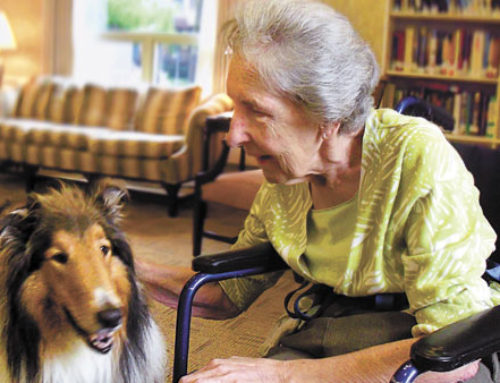Memory care is a specific, long-term form of care for seniors living with dementia.
Memory care is designed to support cognitive function and reduce stressful triggers an unfamiliar environment can create, helping patients feel more comfortable.
In recent years, memory care facilities have surpassed assisted-living services for people living with dementia, as their design techniques support people in all stages of cognitive decline.
Here are the top 4 things you need to know about memory care for your loved one.
-
Encouraging Wandering Can Benefit Residents
6 in 10 people who have dementia will wander. Instead of discouraging this activity, memory care instead builds around the idea that wandering can benefit residents by reducing agitation, increasing appetite, and boosting energy.
One design technique that encourages safe wandering are hallways that lead back to common areas or residential wings rather than to dead-ends.
Another design element to support wandering includes areas for rest or snacking and even Activity Stations. Memory Stations, often consist of a baby cradle or tool bench can be degrading to higher functioning residents. Activity Stations, integrated into interior architecture preserve dignity and may take the form of a laundry folding area, a working office, a silverware drawer, art room and pet stations. Activity Stations encourage residents to interact, feel a connection, and stimulate long-term memory.
-
Sensory Stimulation Is Important
Research shows that sensory stimulation can reduce symptoms of dementia and help patients feel more relaxed and engaged.
Multi-sensory environments (MSEs) are an essential component of memory care. An MSE may be a room that includes elements such as light, aroma, sound, and texture which allow patients to stimulate their senses and reduce anxiety.
From fish tanks to water sounds to tactile pillows, memory care incorporates elements that appeal to the senses so patients feel less agitated, therefore reducing the need for medication in many instances.
-
One Answer Won’t Work for Everyone
One solution won’t work for all patients with dementia, making choosing the right facility important.
For instance, some facilities incorporate a LED circadian lighting system in patients’ rooms to help them feel more at home and balance body’s natural rhythms. If your loved one experiences agitation later in the day (also called sundowning), this could be beneficial for them.
For patients who need more intensive support and safety, using sensors has become a valuable practice. Sensors can be placed anywhere in a room to determine how much time a resident spends in each area to provide emergency alerts and data for a long-term care plan.
-
Memory Care Supports Independence While Still Providing Continuous Care
While memory care is designed to provide a safe environment, it shouldn’t take away independence. Memory care is meant to encourage self-sufficiency, not make residents feel locked in or isolated.
By providing amenities designed to encourage those with dementia to wander, eat, or engage in sensory stimulation, memory care can improve quality of life and slow progression of cognitive decline.
Memory care centers provide strategically-designed comprehensive support for people with dementia and report fewer injuries, fewer hospital visits, and enhanced independence and social interaction.
Considering Memory Care?
When considering specific facilities for memory care, you’ll need to keep your loved one’s unique needs in mind. Memory care can help those with dementia receive the care they need while still maintaining engagement and contentment for as long as possible!




